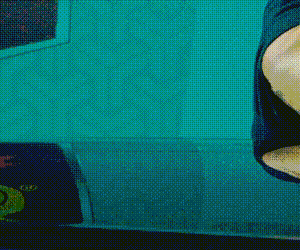Little more than a year after being teased in concept form, the Isuzu D-Max EV has been unveiled in the UK.
Due to first go on sale in Norway later this year, the first right-hand drive examples of the D-Max EV will be built in Thailand in 2026, not only for its home market but also for the UK.
Isuzu Ute Australia has previously said the electric ute will come here, though without a specific timeline on when.
The upcoming implementation of penalties under the New Vehicle Efficiency Standard (NVES) and Isuzu’s existing lineup of two turbo-diesel models means the brand will likely be keen to get the EV ute here sooner rather than later.

Powering the D-Max EV are a pair of dual electric motors, with one unit on the front and rear axles respectively.
The front motor produces 43kW and the rear develops 97kW, totalling 140kW combined.
While this is identical to the famed ‘4J’ 3.0-litre four-cylinder turbo-diesel engine found under the bonnet of most D-Maxes sold in Australia, the EV only produces 325Nm of torque – down a significant 125Nm on the oiler.
Isuzu claims it can sprint (if that’s the right word) from 0-100km/h in 10.1 seconds, and exceed 130km/h.

A relatively small 66.9kWh battery pack – likely due to packaging constraints of the ladder-frame chassis – means the D-Max EV has a claimed driving range of 263km on the WLTP cycle.
The D-Max EV can be charged at up to 11kW with an AC charger and 50kW on a DC fast-charger, which Isuzu says can take it from 20 to 80 per cent charge in one hour.
Those performance and range figures are dwarfed by upcoming rivals such as the LDV eTerron 9, which has been approved for Australia in both rear-wheel drive, 200kW guise and all-wheel drive 325kW trims.
In LDV’s flagship, it can go from 0-100km/h in 5.8 seconds, while a 88.5kWh lithium-ion battery unlocks 330km of driving range.
In the case of both utes, expect driving range to take a hit when loaded up, as was the case with the slow-selling LDV eT60, so far Australia’s only electric ute.

Isuzu claims the D-Max EV has a payload capacity of 1000kg and a braked towing capacity of 3500kg, both of which are on par with the turbo-diesel.
However it tips the scales at 2350kg, up 200kg from a fully-loaded turbo-diesel X-Terrain.
To help cope with the extra weight, the rear leaf springs have been swapped out for a DeDion coil-sprung rear suspension setup.
Off-road capability hasn’t taken too big of a hit, with ground clearance dropped to 210mm (down from 240mm) while wading depth is now 600mm (down from 800mm).
Isuzu has maintained the D-Max’s ‘Rough Terrain Mode’ for off-road braking, aided by the regenerative braking ability of the electric motors.

Externally, the D-Max EV is set apart from its turbo-diesel sibling through EV badging at the front and rear, blue accents in the grille, and a CCS charging port.
The D-Max EV will be offered in the UK across two variants and two body styles, both extended- and dual-cab.
Entry-level versions get an 8.0-inch infotainment touchscreen, 7.0-inch digital instrument cluster, heated front seats, dual-zone climate control, leather upholstery, six speakers, bi-LED headlights and both front and rear parking sensors.
Those who opt for higher-spec versions gain dark grey exterior styling, a 9.0-inch infotainment touchscreen, auto-dimming rearview mirror, and eight speakers.
All examples have four levels of regenerative braking and an Eco driving mode.













Discussion about this post